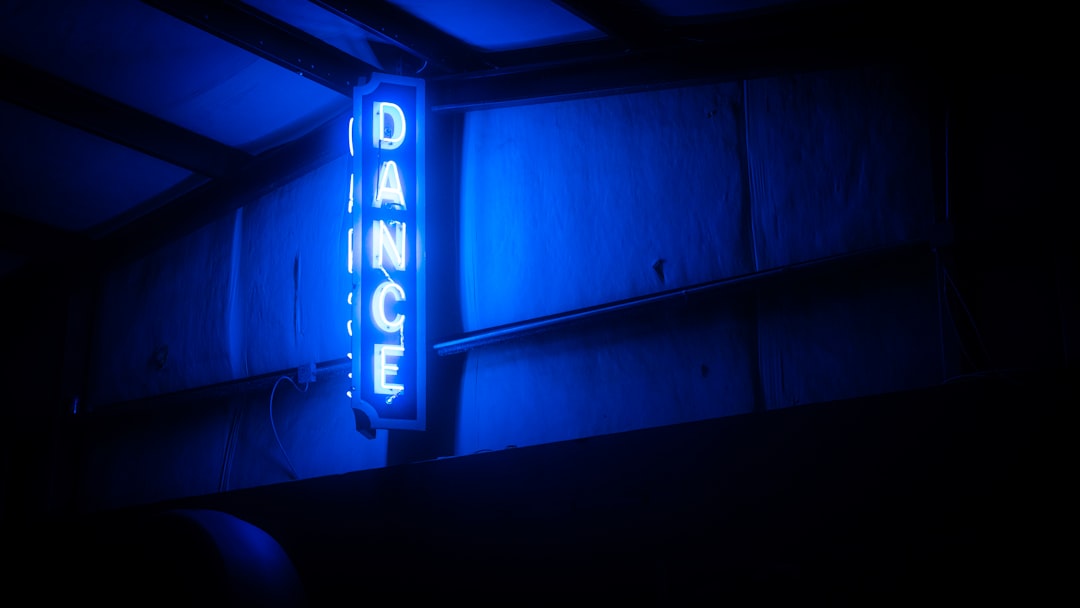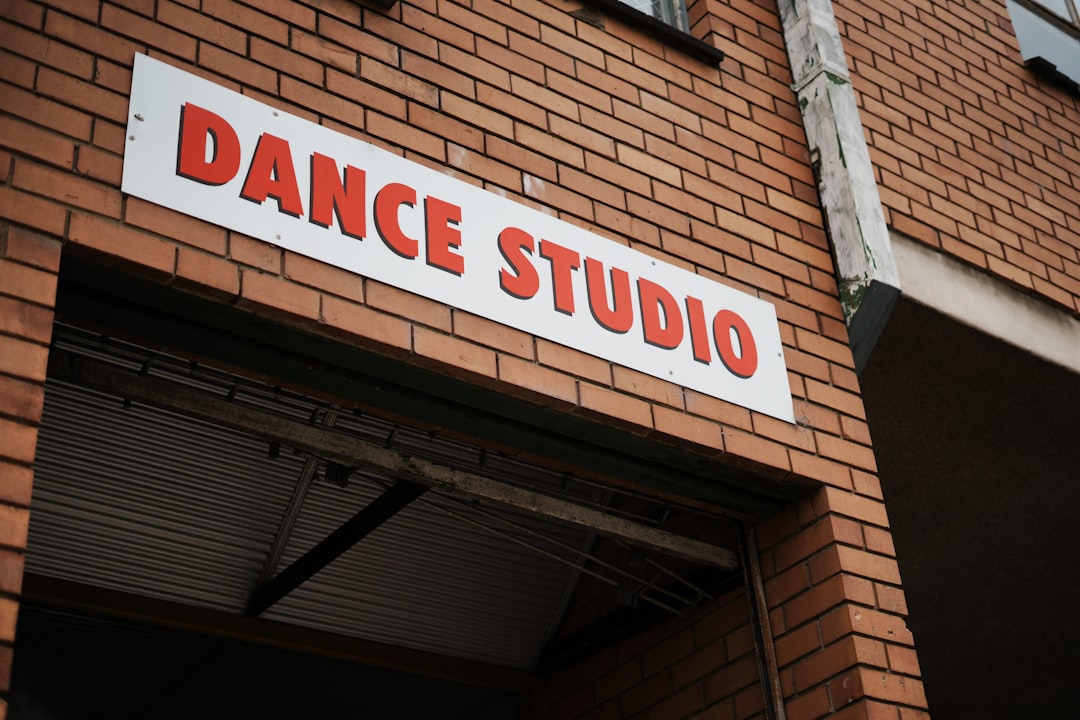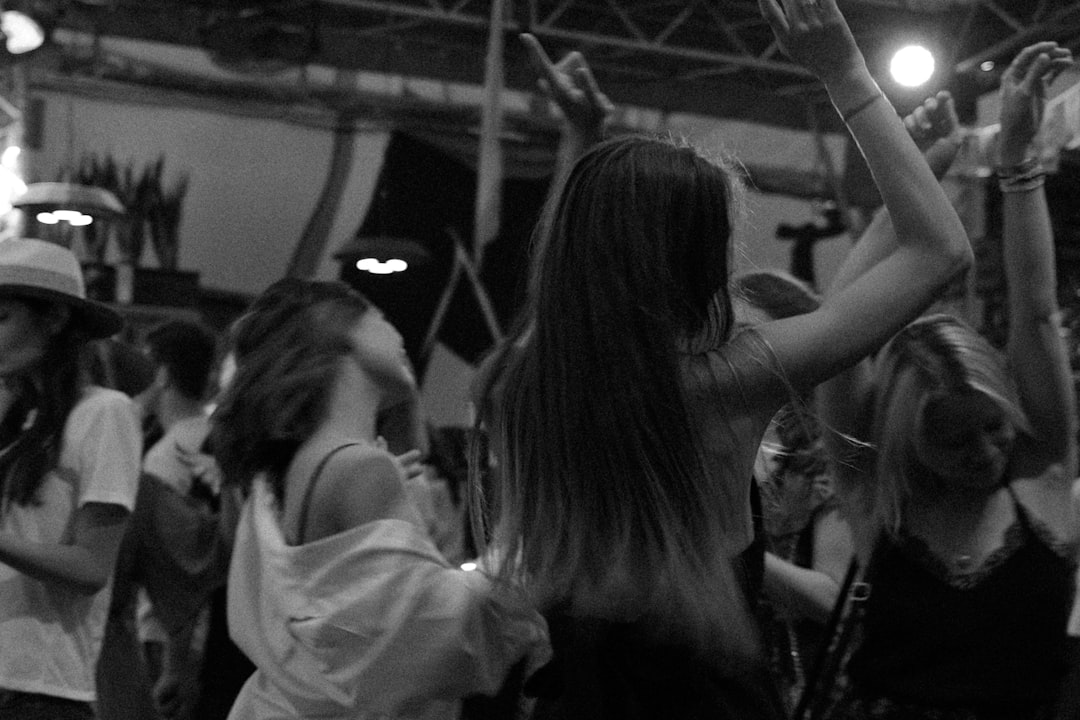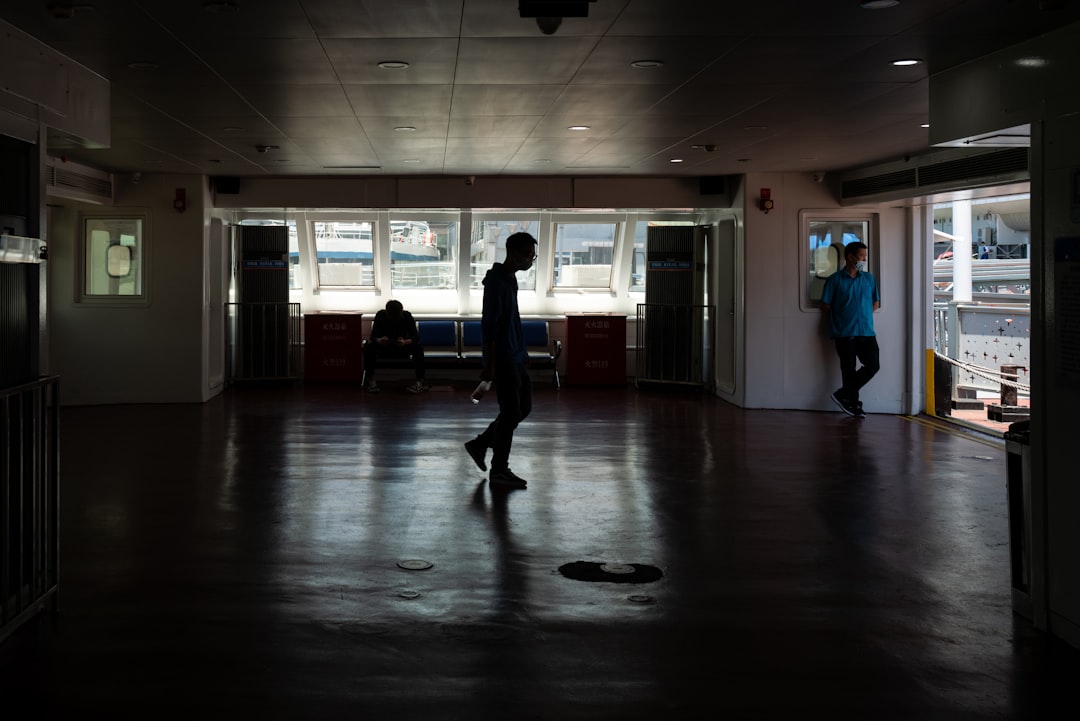

Engage prospects with a scan and streamline customer engagement with FREE QR code marketing tools by Sona – no strings attached!
Create a Free QR CodeFree consultation

No commitment

Engage prospects with a scan and streamline customer engagement with FREE QR code marketing tools by Sona – no strings attached!
Create a Free QR CodeFree consultation

No commitment
As dance studios navigate an increasingly digital-first landscape, owner-operators and marketing leaders face the ongoing challenge of forging meaningful connections with clients both in and out of the studio. Rising competition, evolving client expectations, and the shift to hybrid offerings have pushed the industry to reimagine how they engage, retain, and delight their student base. Studios frequently struggle to keep their student records updated, risking missed follow-up opportunities and losing high-value prospects when class interest is not captured promptly.
Harnessing technology for improved student organization, streamlined check-ins, and personalized experiences is no longer a luxury but a necessity for growth. QR codes in marketing have emerged as a dynamic, cost-effective solution to bridge the physical-digital divide. Many studios today grapple with incomplete records and missed engagement signals, especially when clients show interest in events or classes but never fill out a form or check in manually. QR codes directly address these gaps by turning every in-studio or promotional encounter into a measurable, digital touchpoint, no app required.
By thoughtfully integrating QR codes into your dance studio’s marketing and management strategies, you can overcome outdated systems that often hinder retention and personalization. Not only do these smart workflows help expand your online presence and eliminate data blind spots, but they also unlock clearer insights into which prospects and clients are primed for follow-up. QR-powered engagement transforms everyday studio interactions into strategic growth drivers, increasing organization, participation, and loyalty among your dancer community.

Dance studios are uniquely positioned to convert real-world passion into enduring digital relationships. All too often, interest and intent go uncaptured when traditional sign-in sheets or paper waivers are misplaced or ignored. QR codes eliminate these costly data leaks by turning every interaction with a flyer, signage, or event program into a trackable, actionable moment, see dance studio growth.
Start with the analog bottlenecks that hurt your student experience: paper attendance sheets that do not sync to your CRM, verbal referrals that go untracked, or printed schedules that become outdated. Replace them with scans that lead to a mobile check-in page, a referral form, or a dynamic calendar that updates in real time. The shift is simple, but the impact compounds over weeks and months as your data quality improves, your follow-ups become more relevant, and your retention rates rise.
Set clear goals for each QR code and link them to business outcomes, such as reducing no-shows, promoting higher-level classes, or accelerating trial-to-member conversion. Studios using platforms that unite QR generation, analytics, and CRM integration consistently report fewer missed opportunities and smoother journeys from first inquiry to loyal customer.

Dance studios often operate across a complex mix of touchpoints: open houses, recitals, workshops, ongoing classes, and seasonal programs. As more students toggle between in-person and digital channels, studios can lose sight of who is engaging and why. QR codes provide an immediate, low-friction solution to this challenge by creating a bridge from offline moments to online actions, no app download required.
With QR codes, every posters or door sign becomes a measurable link in your student journey. Instead of relying on memory or manual entry, you can collect real-time signals about intent, satisfaction, and readiness for the next step, then sync those signals to your CRM and marketing tools for timely follow-ups.
Studios that treat every scan as a potential lead or high-fit client gain a decisive edge. The result is a richer, more organized pipeline of prospects and a clearer understanding of the actions that drive retention.
With myriad programs, events, and client types, studios risk relying on generic communication that misses specific needs. Purpose-built QR formats align with the way students and parents engage, letting you design journeys that are fast, personalized, and measurable.
For dance studios, the most impactful formats combine convenience with data capture. Use dynamic versions whenever possible so you can change destinations, A/B test offers, and segment audiences without reprinting.
By deploying these formats in tandem, you can maintain content control and ensure that every code supports a specific outcome: awareness, consideration, or conversion.

Studios frequently encounter gaps in visibility. A student may attend a single workshop, enjoy it, and disappear. Families may attend recitals but never share feedback or opt in to updates. Strategic QR code placement fills these gaps by aligning scans with natural moments of attention.
Think about your studio’s busiest surfaces and highest-interest windows: places where a scan feels like the easiest next step. From the lobby to the parking lot exit, from recital programs to uniform packaging, your physical assets can become digital onramps.
When studios align QR touchpoints with natural engagement hotspots, they surface valuable data about who is truly interested and what to offer next.

To move the retention needle, focus on use cases that streamline operations, personalize outreach, and remove friction from decision-making. Each scan should give value to the student or family while giving the studio a measurable signal to act on.
Adopting these use cases lets staff spend less time on paperwork and more time building relationships. Managers gain clarity on which programs drive retention and which students need outreach to stay engaged.
Dance studios often struggle to understand who is engaging and where each person sits in the journey: trial seeker, ready-to-enroll, or long-time member. Each scan, however, tells a story. It reveals what someone wants, when they want it, and where they engaged. By deploying multiple QR codes across your touchpoints, you can segment audiences automatically and respond with precision.
Begin by mapping codes to funnel stages. Awareness codes live on street-level signage or community bulletin boards. Consideration codes belong on class comparison sheets and open house materials. Conversion codes sit on pricing sheets, onboarding guides, and referral cards. This design ensures each scan is a signal that feeds your CRM for the right follow-up.
Studios that capitalize on scan-driven segmentation move toward 360-degree visibility. They follow up with the right message at the right time, leading to higher conversion rates, greater student satisfaction, and stronger retention.
For many studios, marketing happens in silos. One instructor manages Instagram. Another compiles a monthly newsletter. Front desk staff handle print materials and signage. QR codes serve as a unifying thread that connects these efforts and makes each touchpoint measurable.
Centralizing QR codes and their destinations helps maintain consistent branding and ensures that every code supports a clear business goal. Use a platform that keeps your codes, links, designs, and analytics in one place, then connect it to your CRM via Sona’s HubSpot integration to track performance across channels. Start creating QR codes for free at Sona QR.
This synchronization improves efficiency and amplifies relevance. It also helps staff advocate for QR workflows with confidence, knowing they can see the results.
Start by defining one primary objective, such as reducing check-in friction, improving post-event feedback, or converting trials to memberships. Look for choke points where traditional methods lose participants, like paper sign-in sheets that go unfiled or feedback cards that never get returned.
Then, set a measurable outcome for the campaign. For example, aim to increase on-time attendance by 15 percent through QR check-ins or raise post-recital survey response rates to 40 percent. Clear goals sharpen your design and make it easier to evaluate results.
Choose between static and dynamic codes. Static codes are fine for fixed destinations like a PDF of studio policies. Dynamic codes are best for campaigns that may evolve, since they allow you to change the destination without reprinting and capture scan analytics.
If your objective involves personalization, testing, or segmentation, dynamic is the safe choice. It enables you to test different landing pages, update offers, and capture data that feeds your CRM.
Design your QR code to be on-brand and unmistakable. Add your logo, use studio colors for frames, and pair the code with a clear benefit-focused call to action. Test the scannability on different devices, angles, sizes, and lighting conditions before printing at scale. Use this QR advertising guide for inspiration.
The landing experience matters as much as the code itself. Ensure pages are mobile-friendly, fast-loading, and short on forms. Use autofill and progressive profiling. Reduce friction to increase conversions.
Place codes where the intended action will most naturally happen. For class check-ins, the lobby and studio door frames are ideal. For feedback, the back of recital programs or exit doors work best. For upsells, use mirrors, merch tables, and follow-up emails.
Support your deployment with staff training. Equip instructors and front desk teams to explain how and why to scan. Clear verbal prompts significantly increase adoption, especially for families less familiar with QR codes. Watch a quick video tutorial to train your team.
Monitor scans, conversion rates, and follow-on actions in real time. Look for trends: which placements outperform, which classes attract the most interest, and where drop-offs occur on landing pages. Use these insights to refine your codes, CTAs, and destinations.
Schedule regular reviews. Weekly during a new campaign launch and monthly for ongoing programs. Small tweaks like rewording a CTA or moving a code six inches higher can yield a measurable lift.
A common frustration among dance studio owners is the lack of clarity into which marketing initiatives really move the needle. QR scan analytics close this knowledge gap by connecting offline interactions to online actions and, ultimately, to revenue. When a parent scans a code to enroll, buy a ticket, or submit feedback, that action can be attributed to the specific placement or campaign that drove it.
Detailed analytics let you compare scan and conversion performance across classes, instructors, and locations. They reveal which placements work and which need improvements in messaging or design. With a centralized dashboard, you can see scan volume by hour and day, device types, and the journey from scan to booking or purchase. For methodology on connecting physical scans to revenue, read Sona’s offline attribution.
With the right setup, dance studios no longer operate on guesswork. Every physical asset doubles as a digital data source, letting you reinvest in proven tactics and optimize the ones that lag.
Sustained success with QR codes depends on delivering clear value to your students and parents while capturing high-quality data for your team. Build habits around consistent usage, testing, and staff advocacy to maximize results.
Create a culture where scanning is normal and beneficial. Explain to students and families that scanning simplifies check-in, secures spots in popular classes, and unlocks members-only perks. Pair these messages with tangible rewards like loyalty points or exclusive content.
Over time, these best practices compound. Your studio will convert more trials to memberships, keep classes full, and ensure students feel seen and supported.

Turning great ideas into action is easier when you have models to emulate. Many studios have already seen meaningful improvements in retention, reviews, and operational efficiency by layering QR codes into their workflows. For fresh prompts, browse these dance marketing ideas.
One mid-sized contemporary studio saw post-event reviews soar after adding a QR code to recital tickets that led directly to a mobile feedback form. They bundled a small incentive, such as entry into a merchandise raffle, and the response rate more than doubled compared to email-only requests.
A hip-hop school placed QR codes on class mirrors that linked to a social submission form and hashtag guidelines. Students scanned after class to upload short videos and tag the studio. The campaign doubled user-generated content volume in six weeks while turning previously untracked engagement into measurable reach and new student interest.
During pandemic-related capacity controls, several studios reported a 50 percent reduction in admin time by shifting to QR-powered check-ins and digital waivers. Automated attendance populated student databases, which then triggered no-show follow-ups and renewal reminders. The time saved went into teacher training and choreography development, which further reinforced retention.
These examples show that when you meet families where they are, remove friction, and make engagement fun, your studio becomes easier to love and harder to leave.
QR codes can be transformative, but success depends on thoughtful execution and ongoing maintenance. Avoid generic placement and set a cadence to review and refresh campaign links.
QR codes have redefined what is possible for dance studios seeking lasting student engagement and improved retention. By transforming every flyer, sign, and in-studio interaction into a digital access point, studios address gaps in visitor tracking and engagement that previously led to missed follow-ups and lost revenue.
Key benefits include real-time insight into client behaviors, frictionless registration that prevents administrative bottlenecks, and detailed engagement signals that allow for more timely and relevant follow-up. With well-integrated QR technology, dance studios move beyond generic outreach and incomplete lists, fostering a more connected, loyal, and data-driven community.
By embracing data-driven QR code strategies, dance studios not only make daily management simpler and more measurable; they also create the foundation for long-term client growth, satisfaction, and competitive differentiation in a fast-evolving marketplace. If you need a platform to generate dynamic codes, manage destinations, and connect scan data to your CRM, consider using a centralized solution like Sona QR for code creation and Sona, an AI-powered marketing platform for identity and attribution, at Sona.com for revenue insights. This pairing helps you capture demand at the source and convert it into measurable results.
QR codes have transformed dance studios from simple class sign-up points into dynamic, engagement-driven retention tools. Whether it’s streamlining class check-ins, sharing exclusive choreography videos, or promoting upcoming workshops, QR codes replace cumbersome manual processes with instant, mobile-friendly interactions that deepen student loyalty and boost repeat attendance. Imagine effortlessly tracking which promotions keep dancers coming back and tailoring your offerings in real time to maximize retention.
With Sona QR, you can create dynamic, trackable QR codes in seconds, update campaigns instantly without reprinting, and connect every scan directly to your studio’s growth metrics. This means no missed opportunities to engage and retain your students—just smarter, more effective retention strategies powered by data. Start for free with Sona QR today and turn every scan into a stronger connection and a longer-lasting dance journey.
QR codes enable dance studios to capture real-time student data, automate check-ins and enrollments, collect feedback, and create measurable digital touchpoints that improve retention and marketing effectiveness.
Studios can place QR codes on recital programs, class mirrors, merchandise, signage, and instructor handouts to provide access to schedules, feedback forms, video content, special offers, and social media engagement.
Use QR codes for mobile check-ins, referral tracking, enrollment forms, and digital waivers that automatically sync with your CRM, ensuring accurate and up-to-date student records for effective follow-up.
Incorporate QR codes on unexpected items like water bottles, recital wristbands, parking lot signage, and window decals to capture interest beyond traditional channels and build retargeting audiences.
Centralize QR code management with analytics and CRM integration, assign unique codes per campaign, use dynamic codes for flexibility, align codes with the student journey stages, and train staff to encourage scanning.
QR codes streamline attendance tracking, automate follow-ups, collect timely feedback, and provide personalized offers that increase student engagement and reduce drop-offs.
Dynamic QR codes are best for evolving campaigns like trial offers and event registration, while static codes suit evergreen content such as policies and instructor bios.
Place QR codes at high-intent locations like studio entrances, mirrors, front desks, recital programs, merchandise, and instructor handouts to align with natural student engagement points.
Deploy multiple QR codes mapped to funnel stages and audience types, track scan context and timing, and sync data with your CRM to automate personalized follow-ups and targeted marketing.
Define a clear use case with measurable goals, choose the right QR code type, design and test the code and landing pages, deploy codes strategically, train staff, then track and optimize performance.
QR scan analytics connect physical interactions to online actions and purchases, providing visibility into which campaigns drive enrollments, conversions, and revenue for smarter investment decisions.
Use unique codes per campaign, add UTM tags for tracking, automate post-scan follow-ups, train staff to promote scanning, and creatively place codes on diverse studio assets to maximize engagement.
Avoid generic placements, outdated or irrelevant landing pages, lack of immediate scan value, neglecting performance tracking, and failing to pair technology with staff advocacy for better adoption.
Use Sona QR's trackable codes to improve customer acquisition and engagement today.
Create Your FREE Trackable QR Code in SecondsJoin results-focused teams combining Sona Platform automation with advanced Google Ads strategies to scale lead generation

Connect your existing CRM

Free Account Enrichment

No setup fees
No commitment required

Free consultation

Get a custom Google Ads roadmap for your business






Launch campaigns that generate qualified leads in 30 days or less.
